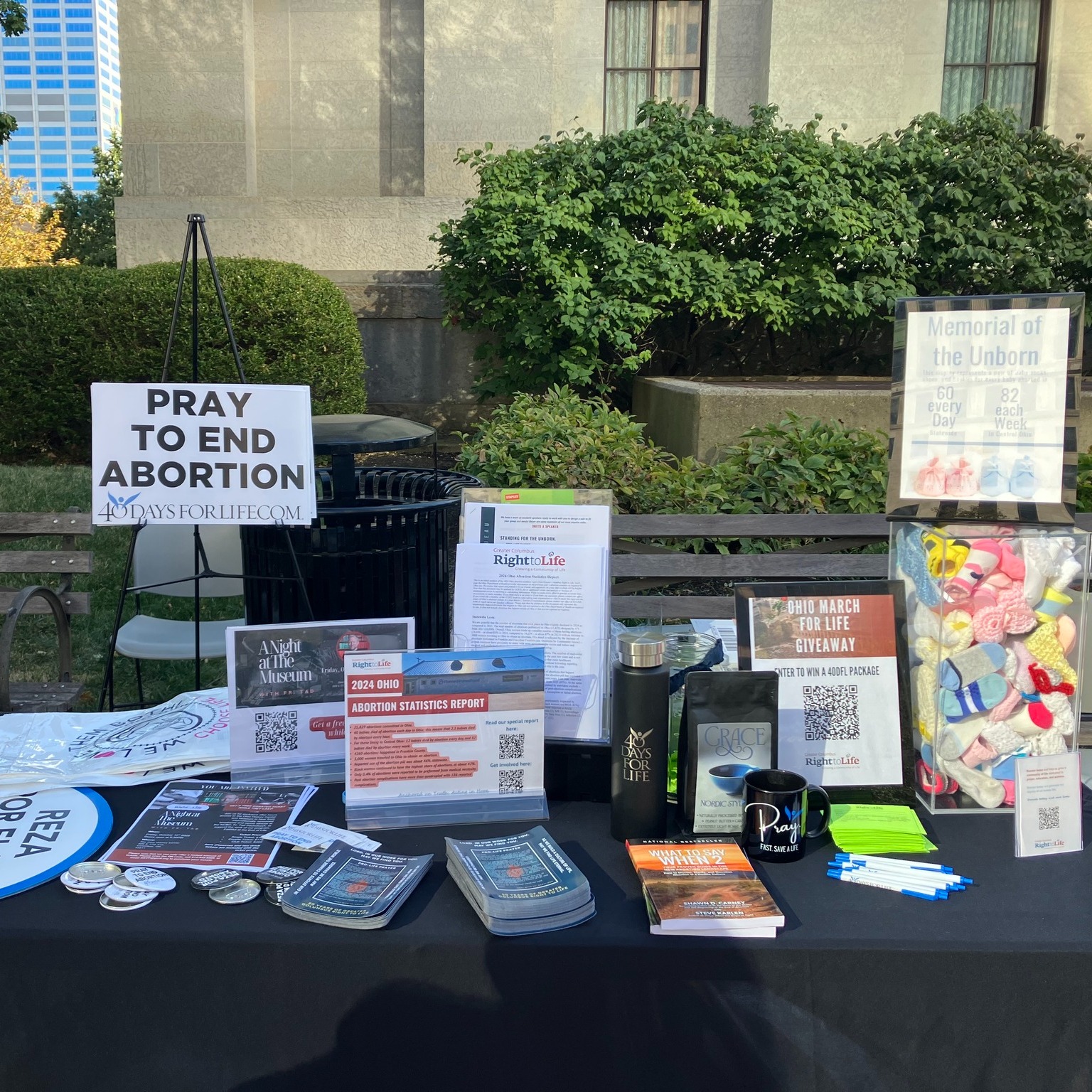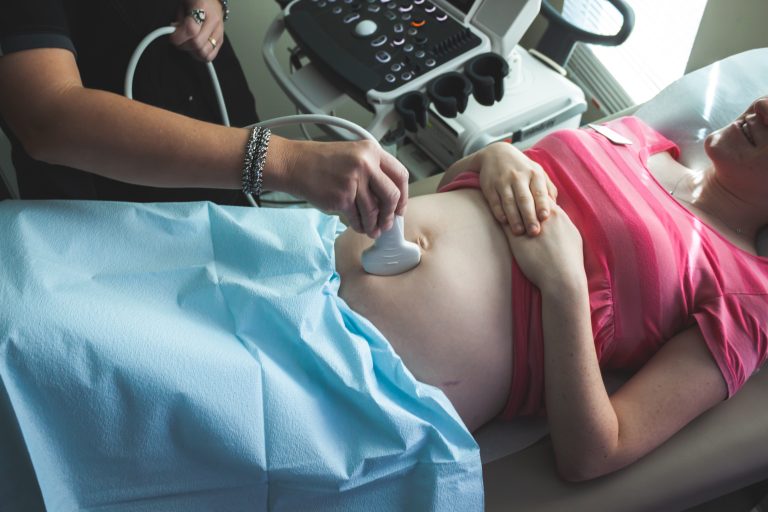(TCT) A group of excited teenage girls rushed up to the Greater Columbus Right to Life (GCRTL) table at the Ohio March for Life, spotting the small box stuffed with baby socks, shoes and booties. One started to exclaim, “Aww. How cuu … ” but her words trickled off as she read the accompanying sign: Memorial of the Unborn. Each pair represents one of the 60 babies who died by abortion every day last year in Ohio. She gulped, “That’s so sad. It’s why we are here, though.”
Anyone that stopped at the table on Friday, Oct. 3 would have seen this play out repeatedly. A state representative came by and took in the scene before snapping a photo that he posted on social media, saying, “This really got to me.”
[Click here to subscribe to Pregnancy Help News!]
The Memorial of the Unborn is one of the programs that GCRTL brings to churches, schools and other organizations to help illustrate the enormity of the abortion crisis. The display can be adjusted to represent the local community and include nearby pregnancy help and post-abortion healing programs.
The Memorial was just updated based on the 2024 abortion report – the count of all known abortions in Ohio. The report contains various demographic and other information that provides a snapshot of the abortion picture in the state, but the statistics don’t tell all of the story.

At least 21,892 women had abortions in Ohio last year, a slight decline from the previous year. It is not known how many abortions were never reported, especially those women who obtained pills by mail and likely never saw a doctor. The number of women coming from out of state for abortions increased, traveling to Ohio from states with laws that are more protective of mother and baby.
There were 4,264 reported abortions in central Ohio. That is about 12 each day – up from 10 each day in 2023. It is known that 4,245 of the reported abortions were performed on women living in the Diocese of Columbus, an increase of 77 from the year before.
Reported use of the abortion pill was about 46 percent statewide but closer to 72 percent locally. Only four of every 1,000 Ohio abortions were from what doctors described as medical necessity.
Meanwhile, the number of reported serious complications from abortions has more than quadrupled.

What the statistics also do not tell is how many women were pressured, coerced or felt like they had no other choice than to abort their child. There are no numbers that indicate how many women regret their choice or will grieve in the future and how many would have chosen life for their unborn child if they had encountered someone praying and offering help, sharing abortion pill reversal information, or guiding them to healing following a past abortion.
Tweet This: While numbers help identify the need, the solution to abortion isn’t in spreadsheets or statistics. It's in a relationship with Jesus Christ
The solution to abortion isn’t in spreadsheets or statistics. Those numbers help identify where the need is. It is found in a relationship ultimately with Jesus Christ.
When a GCRTL team member meets a woman on the sidewalk, she is standing at the edge of despair. Those encounters offer an opportunity to remind her that she is seen, known and loved, especially by God.
For GCRTL, Respect Life Month is every day. Whether it is working to end abortion or euthanasia, everyone needs to get involved -- parishes, schools and families to stand with us. Volunteers are needed to fill hours outside centers where abortions take place to demonstrate faith and mercy to a culture that has forgotten both.
Over the past 50 years, GCRTL has helped over 700 women turn away from abortions. There have been 24,500 fewer abortions in Ohio since 2008, when 40 Days for Life campaigns and regular sidewalk advocacy began.
Editor's note: Beth Vanderkooi is the president of Greater Columbus Right to Life. This article was published by The Catholic Times and is reprinted with permission.





